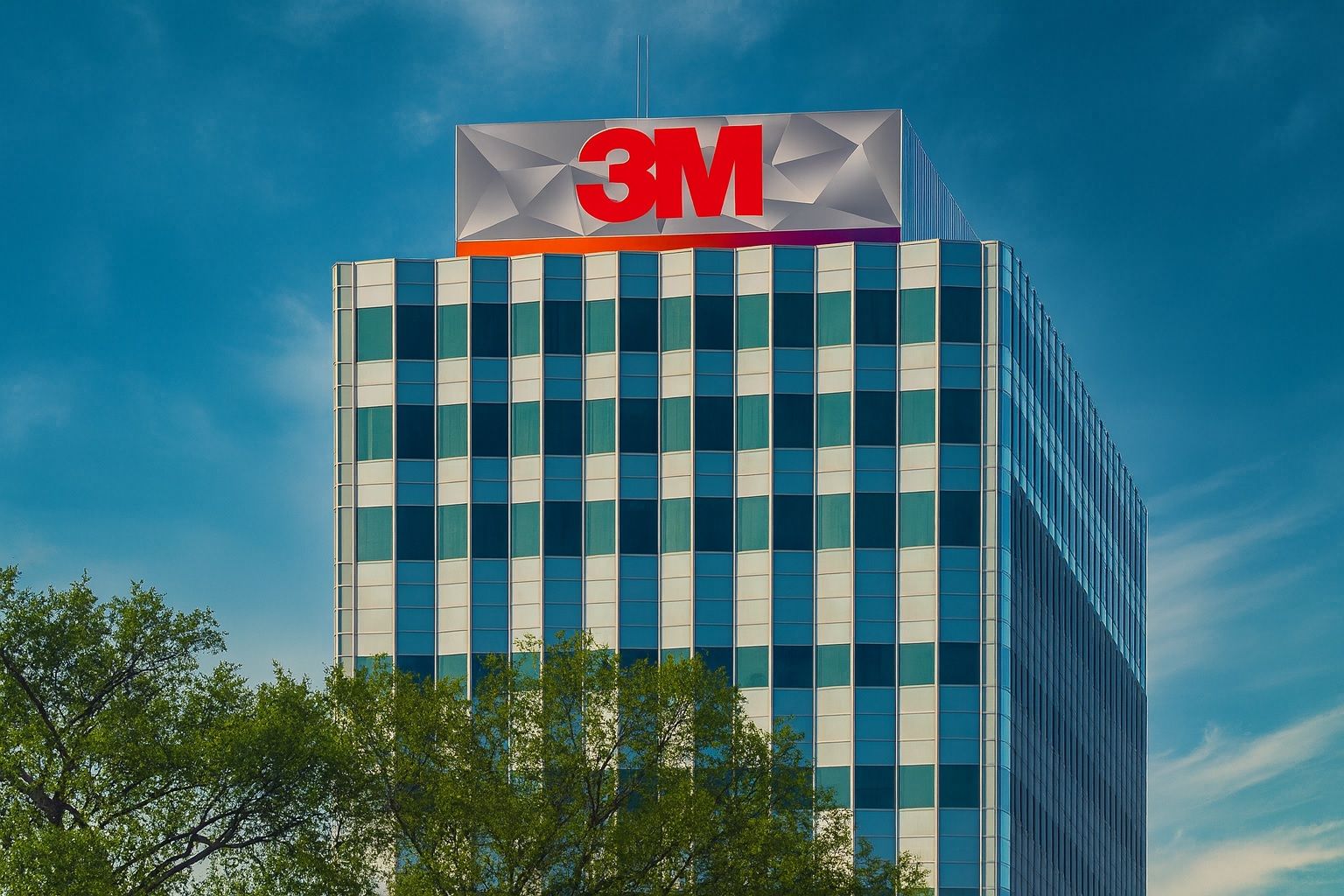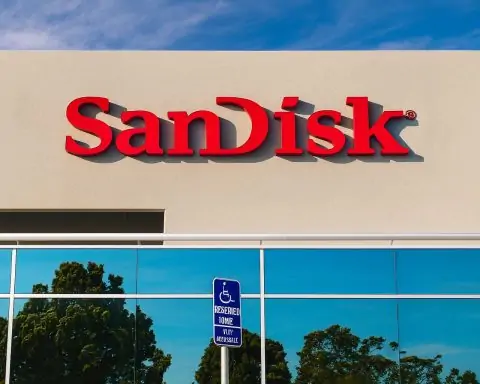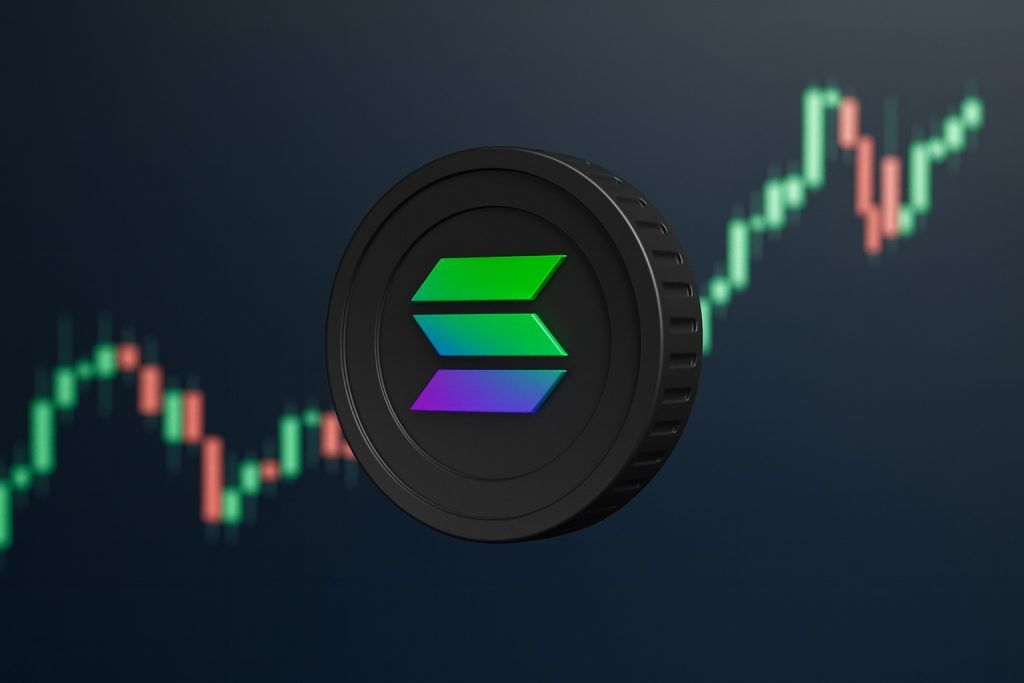- Stock Price (Oct 11, 2025): ~$148.75 USD (closing price) [1]. 3M (MMM) has traded roughly in the $145–$155 range in early Oct 2025.
- 1-Week / 1-Month Trend: About a –2.7% dip on Oct 10 (Fri) [2], roughly –6% over the past week [3]. By comparison, 3M was trading ~$155 in late September, so it’s about 4% below the end-Sep level (i.e. modestly down on a one-month basis). On a longer horizon, MMM is up ~10% year-to-date [4].
- Market Cap & Valuation: ~$79–80 billion [5] [6]. 3M’s trailing P/E is ~20–21× [7] [8] (slightly below peers). By comparison, Honeywell (HON) trades around ~22.7× earnings and General Electric (GE, pre-split) ~40× [9]. 3M’s beta (~1.05 [10]) indicates typical market volatility.
- Dividend & Yield: Quarterly dividend is $0.73 (unchanged) [11] [12], giving a yield of roughly 1.9% at current prices [13]. Management has pledged to return over $10 billion to shareholders (dividends + buybacks) in 2025 [14] [15]. (3M has a 100+-year dividend record.)
- Latest Earnings (2024/2025): 3M’s revenue was ~$24.6B in 2024 (roughly flat YoY) with net income ~$4.0B (~16% margin) [16]. In Q2 2025 (reported July 18, 2025), adjusted EPS was $2.16, up 12% YoY and beating the ~$2.01 consensus [17]; 3M raised full-year 2025 EPS guidance to $7.75–$8.00 (from $7.60–7.90) [18]. Q4 2024 results had also topped estimates (adj. EPS $1.68 vs. $1.66 exp) [19], thanks to cost cuts and modest organic sales growth.
- Legal & Liability Outlook: 3M faces huge legacy liabilities, chiefly from PFAS chemical and earplug cases. A $12.5 billion PFAS settlement with water systems was reached in 2023 [20], but analysts estimate $5–$15B more in PFAS payouts likely remain [21]. An early “bellwether” trial on firefighter PFAS claims is set for Oct 2025 [22]. (CEO Brown notes these are “legacy issues” for which 3M must keep cash on hand [23].) The Combat Arms earplug MDL settled for $6B in 2023, but 3M still spends heavily on litigation (Q2 cash flow was dragged down by ~$2.2B in litigation payments, mainly PFAS and earplug-related [24]).
- Analyst Ratings & Price Targets: Wall Street is cautiously optimistic. Consensus is a “Moderate Buy” (9 Buys, 2 Holds, 1 Sell) [25], with an average 12-month target of $165.60 (~+11% upside) [26]. Several firms have raised targets recently: Wells Fargo to $176 [27], Deutsche Bank to $185 [28], Barclays ~$170 [29]. By contrast, one forecaster notes MMM’s P/E (~22×) leaves limited runway to the ~$162 avg target [30]. Short-term sentiment is mixed (“Hold/Neutral” on Finimize) [31], but most analysts see upside near the mid-$160s [32] [33].
Figure: 3M’s headquarters in Maplewood, MN. Despite legal overhang, management has launched a “3M eXcellence” program to cut costs and drive innovation [34] [35].
Stock Price & Recent Performance
MMM shares trade around $149 as of Oct 10, 2025 [36]. After rallying earlier in the year, the stock has pulled back in October. On Oct 10 it closed at $148.75 [37], down 2.7% on the day and about 6.4% below the prior week [38]. The 52-week range is roughly $122–$164 [39], with year-to-date gains of about +10%. Volume has been moderate and volatility is near market average (3M’s beta ~1.05 [40]). Overall the stock has been range-bound in the high-$140s lately.
In comparison, the broader market was also pulling back in early Oct. 3M’s performance has roughly tracked peers: Honeywell (HON) shares are modestly positive in 2025, while GE (post-split) has lagged. In yield terms, 3M’s ~1.9% yield [41] far exceeds GE’s (essentially zero) and roughly matches Honeywell’s (~2%).
Key News & Catalysts (Oct 2025)
In the past week/month there have been several notable headlines affecting MMM:
- Divestiture Buzz: On Oct 3, Bloomberg (via Newsquawk) reported that 3M is considering selling “billions of dollars” of low-growth industrials assets [42]. The rumor (unconfirmed) suggests 3M may carve off underperforming units to focus on higher-growth areas. This speculation briefly lifted shares, though details remain sparse.
- PFAS Settlement (NJ): Earlier this year (May 2025) 3M took a $285 million charge to settle New Jersey PFAS water cases [43]. This puts a cap on one state’s claims, but broader PFAS litigation (see below) continues to be in the news.
- Upcoming Earnings Call: 3M will report Q3 2025 results on Oct 21. The stock has been relatively quiet ahead of that call. (A press release on Oct 7 confirmed the date [44].) Any guidance updates or surprises could move the market.
- Tax & Legal Updates: Media and investor blogs note a favorable Brazilian tax ruling (reversing a $23.7M royalty adjustment) in Oct 2025 [45], which may provide a small financial tailwind. Conversely, March 2025 saw another multi-billion PFAS water settlement (with New Jersey) into effect [46].
Overall, newsflow has been mixed. Many headlines revolve around 3M’s legal portfolio (PFAS, earplugs) and corporate actions (asset sales, spin-offs), rather than product breakthroughs.
Financials & Recent Results
3M has shown modest growth and margin improvement but faces revenue headwinds from weak consumer and industrial markets. In full-year 2024, 3M reported roughly $24.6 billion in revenue (flat year-on-year) and $4.01 billion net income [47]. GAAP EPS (cont. ops) was $1.33 in Q4 2024 [48]; adjusted (non-GAAP) EPS beat expectations. The 2025 guidance at that time was about $7.60–$7.90 in adjusted EPS [49].
The latest quarterly report was Q2 2025 (Jul 2025). 3M posted $6.3 B GAAP sales (+1.4%) and $1.34 GAAP EPS [50], but after stripping out one-offs (litigation costs, etc.) 3M reported adjusted sales $6.2 B (organic +1.5%) and adjusted EPS $2.16 (up 12% YoY) [51]. This topped the $2.01 Street estimate [52]. Management noted all three business segments grew organically in Q2. The company raised full-year 2025 EPS guidance to $7.75–$8.00 [53], citing better execution. Operating cash flow was weak (~–$1.0B GAAP) due largely to litigation payments [54], but adjusted free cash flow was $1.3B [55].
3M also highlighted its capital return: in H1 2025 it returned about $1.3B to investors via dividends and buybacks [56]. For context, 2024 saw ~$3.8B of buybacks/dividends [57], and management has guided ~$10B for 2025–2027 [58] [59].
In summary, financial momentum is building: organic growth is back, margins are expanding (GOP up 2.3 ppt to 24.5% in Q2 [60]), and guidance was raised. Profitability has recovered from 2023 lows. The main drags remain high interest costs, legacy litigation charges, and the challenge of growing revenue.
Analyst Outlook & Price Targets
Wall Street analysts are cautiously bullish. MarketBeat tallies 12 recent ratings: 9 Buys, 2 Holds, 1 Sell, giving a “Moderate Buy” consensus [61]. The average 12-month price target is $165.60 [62] (about +11% from ~$149), with a range from $100 to $185 [63]. These targets have crept higher in late 2025 as results improved.
Several brokerages have voiced confidence: e.g. Wells Fargo raised its target to $176 (Overweight) on Oct 6 [64], citing strong earnings and cash flow. Deutsche Bank lifted its target to $185 on Oct 2 [65], anticipating continued margin gains. Barclays sees ~$170 [66]. At the same time, some analysts caution that the stock is already fairly valued. One model noted MMM’s ~22× P/E leaves limited upside to a ~$163 target [67]. Short interest is modest (~2.5%) and institutional ownership remains high, suggesting most investors are already “in the tent” on MMM [68].
In summary, forecasts cluster in the $160–$170 zone. Analysts’ commentary emphasizes improving execution but flags the big risks (PFAS and other litigation, slow top-line growth, and leverage) [69] [70]. RBC’s Deane Dray notes that while litigation “won’t impact operating results” per se, it reduces cash flow for new investments [71].
Legal Issues & Liabilities
PFAS (“Forever Chemicals”): 3M is a pioneer of PFAS and is embroiled in massive lawsuits. In 2018 MN settled for $850M; a $12.5B settlement with water utilities was reached in 2023 [72]. Still, thousands of claims persist (firefighters, communities). Experts now predict another $5–15 billion in PFAS liabilities over time [73]. If unresolved, this litigation continues to sap cash and weigh on valuation. A federal trial (McIntyre v. 3M) is set for Oct 2025, which could shape a broader settlement. CEO Brown says 3M will “deal with [these legacy issues] as best as we can” while maintaining cash flexibility [74]. UBS has warned that these overhangs still cloud MMM’s value [75].
Earplug litigation: The long-running Combat Arms earplug case settled in 2023 for $6B (Aearo/3M) for ~300,000 claimants. The bulk of payments is done, but minor earplug claims continue, and Q2 2025 cash flow showed earplug payments in “special items” [76]. Management considers this largely behind it, but it remains a headline risk (past accounting snafus in this case have concerned investors).
Other regulatory matters: 3M has faced tariffs and antitrust probes overseas, but none are as large as PFAS/earplug. The company generally cooperates on regulations and has cut PFAS production (to end by 2025) [77]. Still, litigation is the main legal story.
In short, 3M’s balance sheet and earnings forecasts now exclude most of the major PFAS/earplug costs (they’re in reserves/special items) [78], but investors know these liabilities can grow. Ratings agencies and analysts treat them as quasi-continual expenses, so risk premia (and 3M’s modest yield) partly reflect this.
Restructuring & Strategic Focus
Under CEO Bill Brown (promoted May 2024), 3M is deep in a multi-year turnaround. This includes an aggressive cost-cutting program and refocusing on core businesses. By early 2025 management said the “largest restructuring program” in 3M history was ~90% complete [79]. Since 2023, 3M has cut over 8,500 jobs, reduced office space, and streamlined operations [80]. Brown aims to boost gross margins to the “high 40s” (from ~41% in 2024) by cutting costs ~2% annually [81] and tightening inventory management (targeting 75 days vs 94 today [82]). These moves are expected to free up about $1 billion in cash [83].
The company has also spun off non-core units. On April 1, 2024, 3M listed its Healthcare segment (now named “Solventum”) as a separate company [84] [85]. Post-spin, 3M’s revenue mix is roughly 45% Safety & Industrial, 34% Transportation & Electronics, and 21% Consumer Products [86]. This focus shift is intended to simplify operations and concentrate R&D efforts.
At 2025 Investor Day, Brown outlined three priorities: reinvigorate growth, drive operational excellence, and deploy capital effectively [87]. The plan includes reinvesting heavily in R&D (roughly $3.5 billion over 3 years [88]) and pushing ~1,000 new product launches in that period [89]. Brown also promised $10 billion in shareholder returns over 3 years [90], reflecting a balance of paying dividends/buybacks while maintaining a healthier balance sheet.
These strategic changes are already bearing fruit: free cash flow and margins are recovering, and 3M says it is “meeting [its] financial commitments” on cost cuts [91]. Research firm CFRA noted that Q4’24 results and the 2025 outlook were a “win for investors,” as cost cuts offset weak top-line growth [92]. The Motley Fool highlights that if 3M can push gross margins toward ~48% while growing sales low-single-digits, shareholders could see double-digit returns [93] [94]. Of course, that depends on execution.
Products, Innovation & Technology
Despite its troubles, 3M emphasizes innovation. The company touts about 55,000 active patents and a broad technology platform [95]. In 2024, 3M introduced 169 new products [96] across areas like safety gear, adhesives, filtration, and industrial tapes. With the AI and data-center boom, 3M is also entering semiconductor materials. In Feb 2025 it joined the US-JOINT consortium of chip suppliers to advance next-generation packaging tech [97]. Management says 3M is contributing decades of materials science expertise to support AI/high-performance computing chips [98].
Other product developments include expansion of 3M’s Scotch-Brite, Post-it, Filtrete air filter, and reflective sheeting lines, and new industrial adhesives. The company is also pursuing sustainable solutions (e.g. renewable energy filters, recyclable materials) to meet ESG goals [99]. (3M’s 2025 Global Impact Report highlights a push to launch more new products in 2025 and beyond [100].)
In the longer term, 3M’s strategy hinges on engineering better growth via innovation. Analysts note that past growth was stagnant, but recent years have seen a modest uptick in organic sales (e.g. 1–2% YoY). Management’s goal is to reaccelerate growth above GDP (~2–3%), partly by leveraging AI and automation in manufacturing and by better selling into Europe/Asia. But given slow markets, most of the “improvement story” has so far come from higher efficiency and cost discipline [101].
Comparison to Peers (Honeywell, GE)
3M is often compared to fellow industrials like Honeywell (HON) and General Electric (GE). Here’s how they stack up:
- Valuation & Growth: As noted, 3M’s P/E (~20–21×) is slightly below Honeywell’s (~23×) [102]. GE (pre-split GE Aerospace, etc.) was running much higher (~40× [103]) due to growth expectations. Analysts believe 3M’s growth will trail HON’s (which is boosted by aerospace and software) but exceed the old GE’s.
- Dividend Yield: 3M’s ~1.9% yield [104] is modest but far above GE’s (nearly 0%) and roughly similar to HON’s (~2%). Unlike GE, 3M and HON have long dividend track records. A AAI comparison notes 3M’s yield around 5.3% in 2025 [105] (likely based on earlier price levels) vs GE’s ~0.5%. (Yields fluctuate as price moves.)
- Financial Health: 3M and HON have strong balance sheets; GE has run higher debt (and recently spun off its healthcare, energy units). 3M’s debt/EBITDA is around 2.8× [106], a bit higher than HON but manageable given cash flows.
- Growth Focus: All three have industrial roots but different niches. 3M is product-heavy (electronics materials, consumer goods, safety gear). HON leans toward aerospace controls, building tech, and software. GE (post-2025 split) is mostly aerospace engines and energy tech. Currently, Honeywell has been viewed as the stronger 2025 bet, given robust aerospace recovery [107], whereas 3M’s rebound depends more on its restructuring.
Overall, 3M is generally viewed as the most defensive/dividend-centric of the trio. Its stock tends to move slower than GE’s or HON’s. On valuation and yield, 3M compares favorably to GE (3M clearly ahead) and is in line with HON. Analysts often benchmark MMM against HON for industrial demand cues.
Dividend & Shareholder Returns
3M continues its long-standing dividend (current payout $2.92/yr) [108]. The yield is only ~1.9% because the stock price is near a multi-year high; however, the cash payout itself is very stable. Management has pledged hefty shareholder returns: in Q2 2025 alone 3M returned $1.3B [109] via dividends+buybacks, and at Investor Day they reiterated plans to return ~$10B over 3 years [110]. 2024’s returns were ~$3.8B [111].
Given 3M’s free cash flow generation (~$5B+ annual adjusted free cash flow projected [112]) and relatively low capex needs, buybacks are expected to continue. In sum, 3M is shareholder-friendly: expect the $0.73 quarterly payout to continue, and for buybacks to add perhaps 1–2% of shares per year. This strong capital return program is cited by analysts as a floor for the stock value.
Outlook and Risks
As of Oct 12, 2025, 3M’s setup is “stable, maybe tilting up”. The stock is near the low $150s after a small pullback; analysts’ targets suggest upside to the mid-$160s if all goes well. The biggest upside catalysts would be continued execution of cost cuts (pushing margins higher), any surprise revenue acceleration (e.g. new products or market recovery), or a major PFAS settlement clearing most litigation.
However, major risks remain: PFAS/earplug liabilities are the elephant in the room. A verdict or settlement larger than expected could send the stock down. Slow revenue growth is another risk – if demand in automotive, electronics or consumer remains weak, earnings gains could stall. Geopolitical or macro shocks (trade policy, inflation) could also pressure materials companies. On the other hand, any sign of easing litigation or evidence that 3M is reinvigorating R&D (e.g. 3M patents, innovation labs) could be positive.
At today’s price (~$149), MMM trades near analysts’ valuation. If management hits its targets (mid-single-digit sales growth, high-40% margins, disciplined capex), many expect earnings power to rise enough to justify the stock in the $165–180 range [113] [114]. That said, some investors may wait for greater visibility on PFAS and revenue before committing.
Sources: Current financials and targets are drawn from 3M’s filings and recent news (3M Q2 and Q4 reports [115] [116]), analyst notes and MarketBeat [117] [118], and industry coverage (Reuters, Star Tribune) [119] [120]. Analyst quotes and consensus data are cited where available [121] [122]. Peer comparisons use data from analyst surveys and 3M’s own reports [123] [124]. All information is current as of Oct. 12, 2025.
References
1. ts2.tech, 2. ts2.tech, 3. ts2.tech, 4. ts2.tech, 5. ts2.tech, 6. www.marketbeat.com, 7. ts2.tech, 8. www.marketbeat.com, 9. ts2.tech, 10. www.marketbeat.com, 11. news.3m.com, 12. ts2.tech, 13. ts2.tech, 14. ts2.tech, 15. news.3m.com, 16. ts2.tech, 17. www.marketbeat.com, 18. news.3m.com, 19. www.reuters.com, 20. www.startribune.com, 21. www.startribune.com, 22. www.startribune.com, 23. www.startribune.com, 24. news.3m.com, 25. www.marketbeat.com, 26. www.marketbeat.com, 27. www.marketbeat.com, 28. www.marketbeat.com, 29. www.marketbeat.com, 30. ts2.tech, 31. ts2.tech, 32. ts2.tech, 33. www.marketbeat.com, 34. www.investing.com, 35. www.nasdaq.com, 36. ts2.tech, 37. ts2.tech, 38. ts2.tech, 39. ts2.tech, 40. www.marketbeat.com, 41. ts2.tech, 42. newsquawk.com, 43. ts2.tech, 44. news.3m.com, 45. ts2.tech, 46. ts2.tech, 47. ts2.tech, 48. news.3m.com, 49. www.reuters.com, 50. news.3m.com, 51. news.3m.com, 52. www.marketbeat.com, 53. news.3m.com, 54. news.3m.com, 55. news.3m.com, 56. news.3m.com, 57. www.investing.com, 58. www.investing.com, 59. ts2.tech, 60. news.3m.com, 61. www.marketbeat.com, 62. www.marketbeat.com, 63. www.marketbeat.com, 64. www.marketbeat.com, 65. www.marketbeat.com, 66. www.marketbeat.com, 67. ts2.tech, 68. ts2.tech, 69. ts2.tech, 70. www.startribune.com, 71. www.startribune.com, 72. www.startribune.com, 73. www.startribune.com, 74. www.startribune.com, 75. www.startribune.com, 76. news.3m.com, 77. www.startribune.com, 78. news.3m.com, 79. www.investing.com, 80. www.reuters.com, 81. www.nasdaq.com, 82. www.nasdaq.com, 83. www.nasdaq.com, 84. www.reuters.com, 85. ts2.tech, 86. ts2.tech, 87. www.investing.com, 88. www.investing.com, 89. www.investing.com, 90. www.investing.com, 91. www.investing.com, 92. www.reuters.com, 93. www.nasdaq.com, 94. www.nasdaq.com, 95. ts2.tech, 96. www.investing.com, 97. news.3m.com, 98. news.3m.com, 99. www.3m.com, 100. www.3m.com, 101. www.nasdaq.com, 102. ts2.tech, 103. ts2.tech, 104. ts2.tech, 105. stocksanddividends.com, 106. ts2.tech, 107. www.zacks.com, 108. ts2.tech, 109. news.3m.com, 110. www.investing.com, 111. www.investing.com, 112. news.3m.com, 113. www.nasdaq.com, 114. www.marketbeat.com, 115. news.3m.com, 116. www.reuters.com, 117. www.marketbeat.com, 118. www.marketbeat.com, 119. www.reuters.com, 120. www.startribune.com, 121. www.marketbeat.com, 122. ts2.tech, 123. ts2.tech, 124. www.startribune.com







